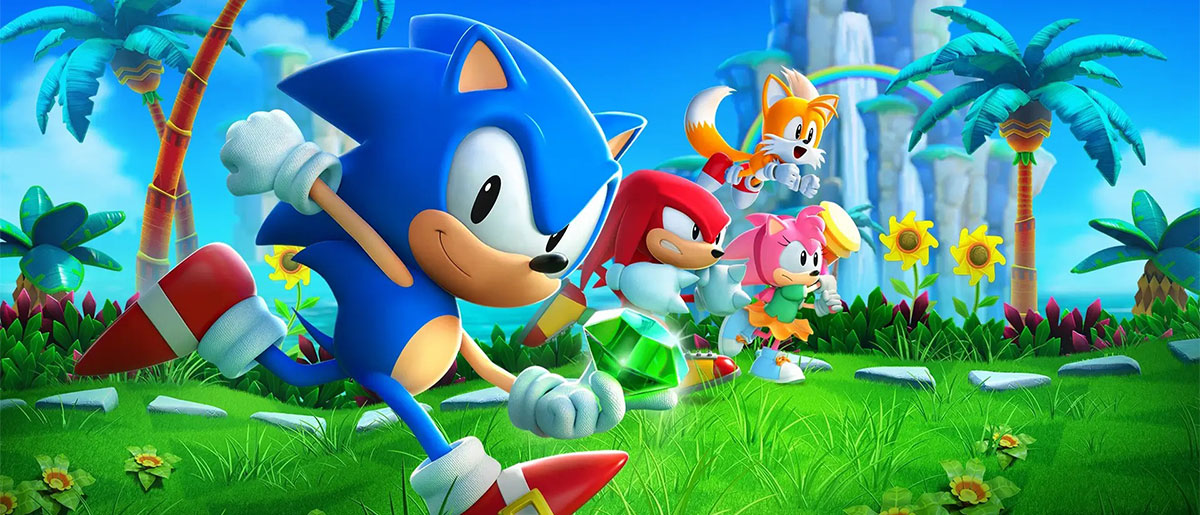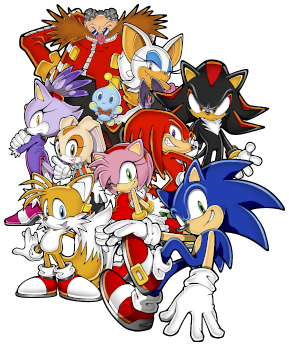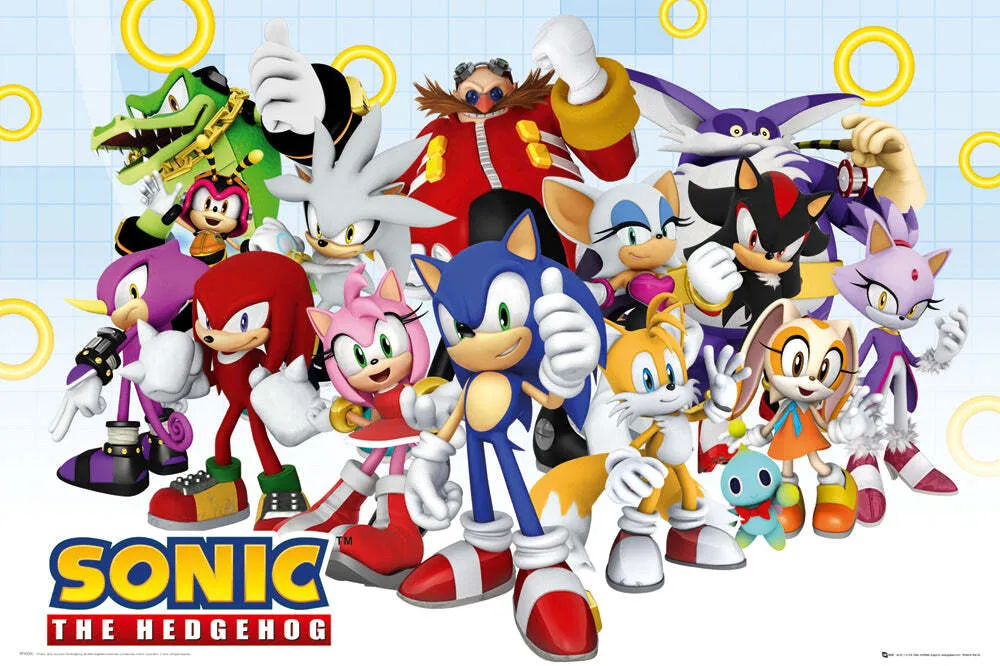
The Sonic franchise is known for its large cast of characters; Sonic the Fighters (1996) producer Yu Suzuki joked that anyone who makes a Sonic game has the duty to create new characters. The first game introduced Sonic, a blue hedgehog who can run at incredible speeds, and Doctor Eggman, a rotund mad scientist. During the Genesis era, Eggman was referred to as Doctor Ivo Robotnik in Western territories. Sega of America's Dean Sitton made the change without consulting the Japanese developers, who did not want a single character to have two different names. Since Sonic Adventure, the character has been referred to as Eggman in all territories, although the Robotnik name is still acknowledged.
Sonic games traditionally follow Sonic's efforts to stop Eggman, who schemes to obtain the Chaos Emeralds—seven emeralds with mystical powers. The Emeralds can turn thoughts into power warp time and space with a technique called Chaos Control, give energy to living things, and be used to create nuclear or laser-based weaponry. They typically act as MacGuffins in the stories. Eggman seeks the Emeralds in his quest to conquer the world, and traps animals in aggressive robots and prison capsules. Because Sonic Team was inspired by the culture of the 1990s, Sonic features environmental themes. Sonic represents "nature", while Eggman represents "machinery" and "development"—a play on the then-growing debate between environmentalists and developers.
Much of the supporting cast was introduced in the succeeding games for the Genesis and its add-ons. Sonic 2 introduced Sonic's sidekick Miles "Tails" Prower, a fox who can fly using his two tails. Sonic CD introduced Amy Rose, a pink hedgehog and Sonic's self-proclaimed girlfriend, and Metal Sonic, a robotic doppelgänger of Sonic created by Eggman. Sonic 3 introduced Sonic's rival Knuckles, a red echidna and the guardian of the Master Emerald. The Master Emerald, introduced in Sonic & Knuckles, controls the power of the Chaos Emeralds. Knuckles' Chaotix introduced the Chaotix, a group comprising Vector the Crocodile, Espio the Chameleon and Charmy Bee. Three characters introduced during this period, Mighty the Armadillo and Ray the Flying Squirrel from SegaSonic the Hedgehog and Fang the Sniper from Sonic Triple Trouble (1994), faded into obscurity, but became prominent characters again in Sonic Mania and Superstars.

During Sonic Adventure's development, Sonic Team discovered that the relatively simple character designs did not suit a 3D environment. The art style was modernized to alter the characters' proportions and make them appeal to Western audiences Since Sonic Adventure, the series' cast has expanded. Notable characters include Big, a large cat who fishes for his pet frog Froggy; the E-100 Series of robots; Shadow, a brooding black hedgehog; Rouge, a treasure-hunting bat; Blaze, a cat from an alternate dimension; and Silver, a telekinetic hedgehog from the future. The Chao creatures function as digital pets and minor gameplay elements, and Wisp creatures function as power-ups. Flicky, the blue bird from Sega's 1984 arcade game, appears in several Sonic games, most notably 3D Blast.
During Sonic Adventure's development, Sonic Team discovered that the relatively simple character designs did not suit a 3D environment. The art style was modernized to alter the characters' proportions and make them appeal to Western audiences Since Sonic Adventure, the series' cast has expanded. Notable characters include Big, a large cat who fishes for his pet frog Froggy; the E-100 Series of robots; Shadow, a brooding black hedgehog; Rouge, a treasure-hunting bat; Blaze, a cat from an alternate dimension; and Silver, a telekinetic hedgehog from the future. The Chao creatures function as digital pets and minor gameplay elements, and Wisp creatures function as power-ups. Flicky, the blue bird from Sega's 1984 arcade game, appears in several Sonic games, most notably 3D Blast.
Some Sonic characters have featured in spin-off games. Eggman is the featured character of Dr. Robotnik's Mean Bean Machine, a Western localization of Puyo Puyo. Sega replaced the Puyo Puyo characters with Sonic characters because it feared Puyo Puyo would not be popular with a Western audience. In 1995, Sega released the Knuckles spinoff Knuckles' Chaotix for the 32X, and two Tails spin-offs for Game Gear: Tails' Skypatrol (a scrolling shooter) and Tails Adventure (a Metroidvania game). Shadow the Hedgehog (2005) was developed in response to the Shadow character's popularity and to introduce "gun action" gameplay to the franchise. Iizuka has said that future spin-offs, such as sequels to Knuckles' Chaotix and Shadow the Hedgehog or a Big the Cat game, remain possibilities.
